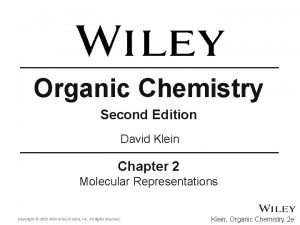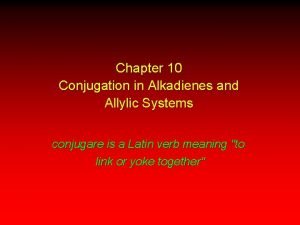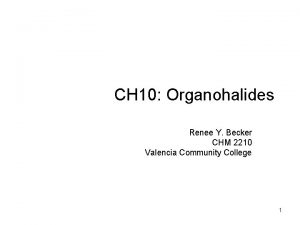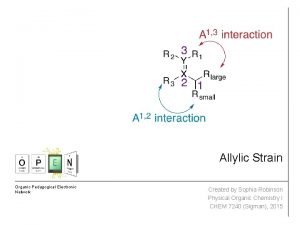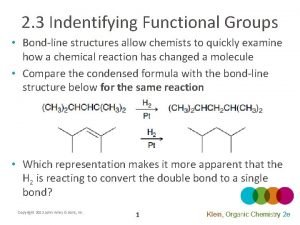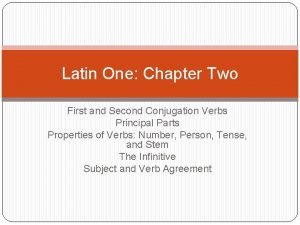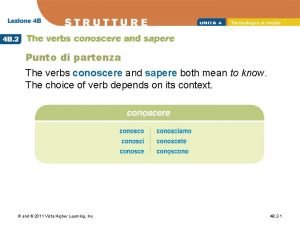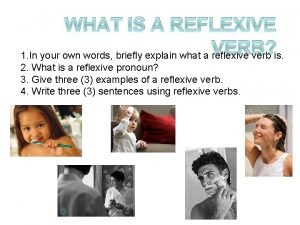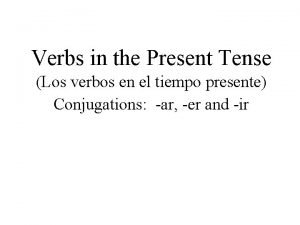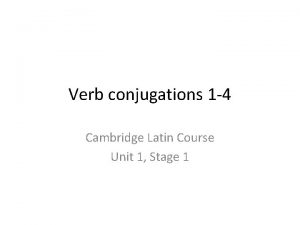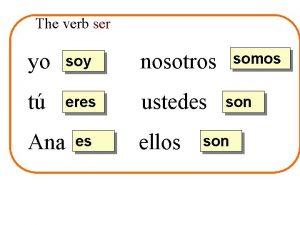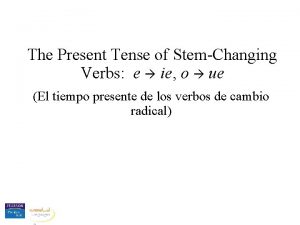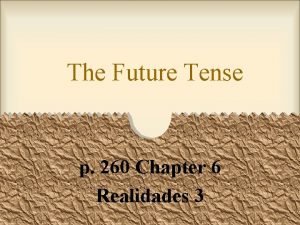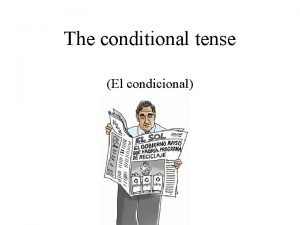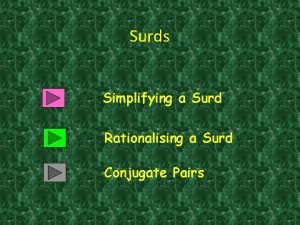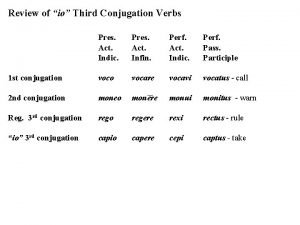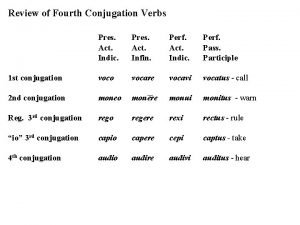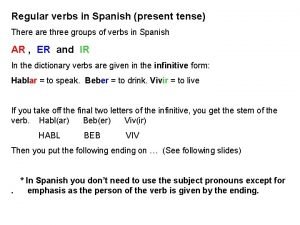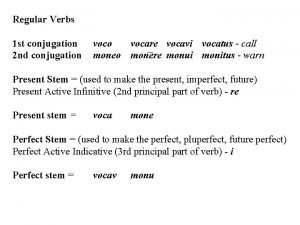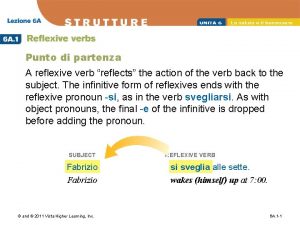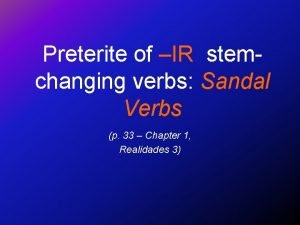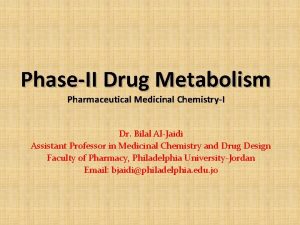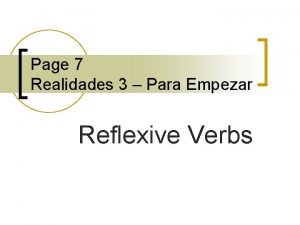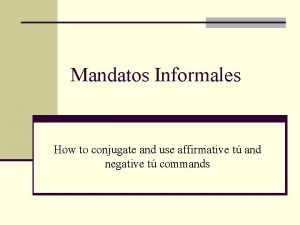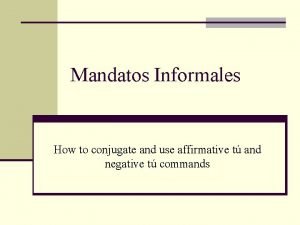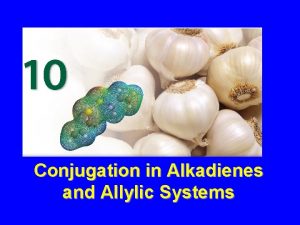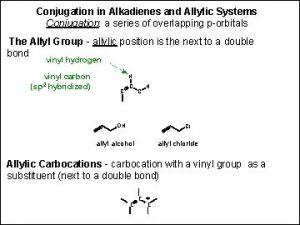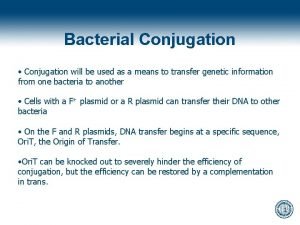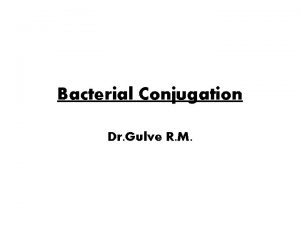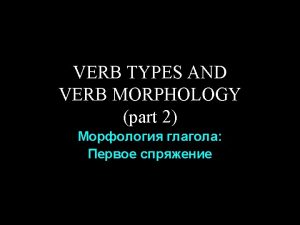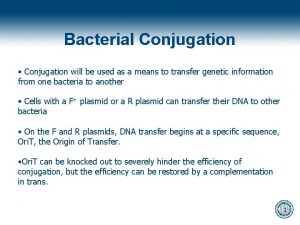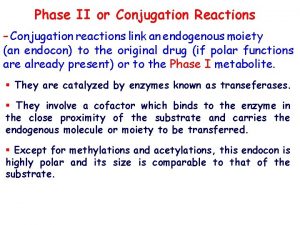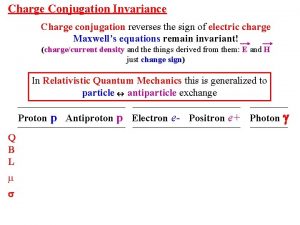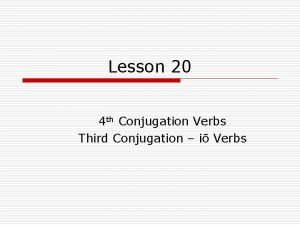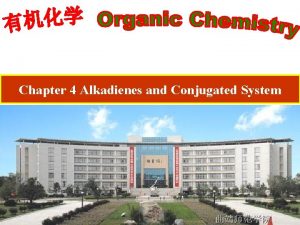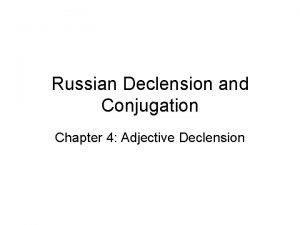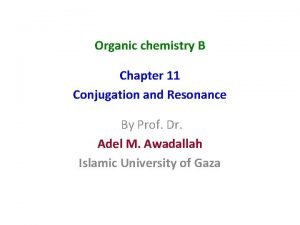Chapter 10 Conjugation in Alkadienes and Allylic Systems








































- Slides: 40

Chapter 10 Conjugation in Alkadienes and Allylic Systems conjugare is a Latin verb meaning "to link or yoke together"

The Double Bond as a Substituent C C C+ allylic carbocation

The Double Bond as a Substituent C C C+ allylic carbocation C C C • allylic radical

The Double Bond as a Substituent C C C+ C allylic carbocation C C C • allylic radical C C C conjugated diene

10. 1 The Allyl Group H H H C C C H H

Vinylic versus Allylic C C C vinylic carbons allylic carbon

Vinylic versus Allylic H H C C C H vinylic hydrogens are attached to vinylic carbons

Vinylic versus Allylic H C C C H H allylic hydrogens are attached to allylic carbons

Vinylic versus Allylic X X C C C X vinylic substituents are attached to vinylic carbons

Vinylic versus Allylic X X C C C X allylic substituents are attached to allylic carbons

10. 2 Allylic Carbocations C C C +

Allylic Carbocations the fact that a tertiary allylic halide undergoes solvolysis (SN 1) faster than a simple tertiary alkyl halide CH 3 H 2 C CH 3 123 Cl CH 3 C CH 3 1 relative rates: (ethanolysis, 45°C) Cl

Allylic Carbocations provides good evidence for the conclusion that allylic carbocations are more stable than other carbocations CH 3 H 2 C CH C+ CH 3 formed faster CH 3 C+ CH 3

Allylic Carbocations provides good evidence for the conclusion that allylic carbocations are more stable than other carbocations CH 3 H 2 C CH C+ CH 3 H 2 C=CH— stabilizes C+ better than CH 3—

Stabilization of Allylic Carbocations Delocalization of electrons in the double bond stabilizes the carbocation resonance model orbital overlap model

Resonance Model CH 3 H 2 C CH C+ CH 3 + H 2 C CH 3 CH C CH 3

Resonance Model CH 3 H 2 C CH + H 2 C C+ CH 3 d+ H 2 C CH 3 CH C d+ CH 3

Orbital Overlap Model d+ d+

Orbital Overlap Model

Orbital Overlap Model

Orbital Overlap Model

Hydrolysis of an Allylic Halide CH 3 H 2 C CH C Cl CH 3 H 2 O Na 2 CO 3 CH 3 H 2 C CH (85%) C CH 3 OH + HOCH 2 CH (15%) C CH 3

Corollary Experiment CH 3 Cl. CH 2 CH C CH 3 H 2 O Na 2 CO 3 CH 3 H 2 C CH (85%) C CH 3 OH + HOCH 2 CH (15%) C CH 3

CH 3 H 2 C CH C Cl and Cl. CH 2 CH CH 3 give the same products because they form the same carbocation C CH 3

CH 3 H 2 C CH Cl C and Cl. CH 2 CH C CH 3 give the same products because they form the same carbocation CH 3 H 2 C CH C+ CH 3 + H 2 C CH 3 CH C CH 3

more positive charge on tertiary carbon; therefore more tertiary alcohol in product CH 3 H 2 C CH C+ CH 3 + H 2 C CH 3 CH C CH 3

(85%) H 2 C (15%) CH 3 CH OH + HOCH 2 C CH CH 3 more positive charge on tertiary carbon; therefore more tertiary alcohol in product CH 3 H 2 C CH C+ CH 3 + H 2 C CH 3 CH C CH 3

10. 3 Allylic Free Radicals C • C C

Allylic free radicals are stabilized by electron delocalization C • C C • C C C

Free-radical stabilities are related to bond-dissociation energies CH 3 CH 2—H H 2 C CHCH 2—H 410 k. J/mol • CH 3 CH 2 + H • 368 k. J/mol • CHCH 2 + H • H 2 C C—H bond is weaker in propene because resulting radical (allyl) is more stable than radical (propyl) from propane

10. 4 Allylic Halogenation

Chlorination of Propene addition Cl. CH 2 CHCH 3 H 2 C Cl CHCH 3 + Cl 2 H 2 C 500 °C CHCH 2 Cl + HCl substitution

Allylic Halogenation selective for replacement of allylic hydrogen free radical mechanism allylic radical is intermediate

Hydrogen-atom abstraction step H H H C C 410 k. J/mol C H H H . . . Cl: . . 368 k. J/mol allylic C—H bond weaker than vinylic chlorine atom abstracts allylic H in propagation step

Hydrogen-atom abstraction step H H H C • C 410 k. J/mol C H H . . : H : Cl. . 368 k. J/mol

N-Bromosuccinimide reagent used (instead of Br 2) for allylic bromination Br O NBr + O heat O + CCl 4 (82 -87%) NH O

Limited Scope Allylic halogenation is only used when: all of the allylic hydrogens are equivalent and the resonance forms of allylic radical are equivalent

Example H H Cyclohexene satisfies both requirements All allylic hydrogens are equivalent H H

Example H H Cyclohexene satisfies both requirements All allylic hydrogens are equivalent H H • H H H • Both resonance forms are equivalent H

Example 2 -Butene CH 3 CH CHCH 3 All allylic hydrogens are equivalent But CH 3 CH CH • CH 2 • CH 3 CH CH Two resonance forms are not equivalent; gives mixture of isomeric allylic bromides. CH 2
 Localized lone pair
Localized lone pair Xxcccx
Xxcccx Nbs allylic bromination
Nbs allylic bromination Allylic strain
Allylic strain Allylic lone pair
Allylic lone pair Decision support systems and intelligent systems
Decision support systems and intelligent systems Linking vowel to vowel
Linking vowel to vowel Conoscere vs sapere
Conoscere vs sapere Chapter 24 the immune and lymphatic systems and cancer
Chapter 24 the immune and lymphatic systems and cancer Chapter 24 the immune and lymphatic systems and cancer
Chapter 24 the immune and lymphatic systems and cancer Dicapine
Dicapine Embedded systems vs cyber physical systems
Embedded systems vs cyber physical systems Engineering elegant systems: theory of systems engineering
Engineering elegant systems: theory of systems engineering Reflexive verb levantarse
Reflexive verb levantarse Future verbs spanish
Future verbs spanish Conjugate trabajar
Conjugate trabajar Construir preterite
Construir preterite Yo soy tu eres el ella usted es
Yo soy tu eres el ella usted es Latin verb conjugation
Latin verb conjugation Departhanon
Departhanon Ar past tense spanish
Ar past tense spanish En un sándwich, prefiero
En un sándwich, prefiero Hacer future tense
Hacer future tense Conditional spanish tense
Conditional spanish tense Conjugation of surds
Conjugation of surds O as a amos an chart
O as a amos an chart Take conjugation
Take conjugation Audio conjugation
Audio conjugation Spanish regular verb conjugation
Spanish regular verb conjugation Imperfect conjugation
Imperfect conjugation Pintarse reflexive conjugation
Pintarse reflexive conjugation Re verb conjugation
Re verb conjugation Radersi reflexive conjugation
Radersi reflexive conjugation Mentir preterite
Mentir preterite Saber conjugation
Saber conjugation Glucuronide conjugation
Glucuronide conjugation Ar verb conjugation
Ar verb conjugation Cepillarse reflexive conjugation
Cepillarse reflexive conjugation Mandatos afirmativos informales
Mandatos afirmativos informales Mandatos informales conjugation
Mandatos informales conjugation Mandato formal
Mandato formal
